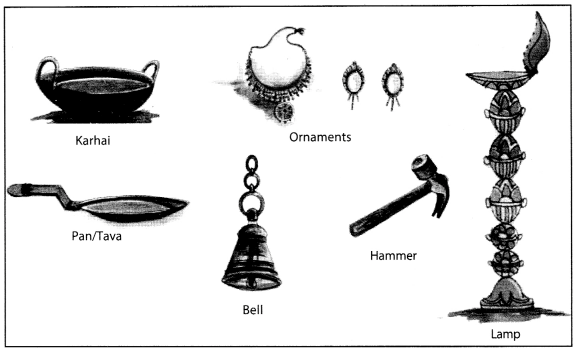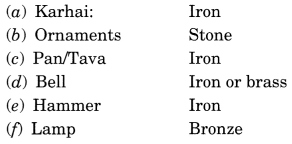NCERT Solutions | Class 7 Social Science Geography Chapter 2 | Inside our Earth

CBSE Solutions | Social Science Class 7
Check the below NCERT Solutions for Class 7 Social Science Geography Chapter 2 Inside our Earth Pdf free download. NCERT Solutions Class 7 Social Science were prepared based on the latest exam pattern. We have Provided Inside our Earth Class 7 Social Science NCERT Solutions to help students understand the concept very well.
NCERT | Class 7 Social Science Geography
| Book: | National Council of Educational Research and Training (NCERT) |
|---|---|
| Board: | Central Board of Secondary Education (CBSE) |
| Class: | 7th |
| Subject: | Social Science Geography |
| Chapter: | 2 |
| Chapters Name: | Inside our Earth |
| Medium: | English |
Inside our Earth | Class 7 Social Science | NCERT Books Solutions
Class 7 Geography Chapter 2 NCERT Textbook Questions and Answers
NCERT Solutions for Class 7 SST Geography Chapter 2, Question 1.
Answer the following questions.
- What are the three layers of the earth?
- What is a rock?
- Name three types of rocks.
- How are extrusive and intrusive rocks formed?
- What do you mean by a rock cycle?
- What are the uses of rocks?
- What are metamorphic rocks?
CBSE Class 7 SST Geography Chapter 2, Answer:
(i) Three layers of the earth are:(a) Crust
(b) Mantle
(c) Core
(ii) Any natural mass of mineral matter that makes up the earth’s crust is called a rock.
(iii) Three types of rocks are:
- Sedimentary rocks
- Metamorphic rocks
- Igneous rocks which are also known as primary rocks
(iv) When the molten lava comes on the earth’s surface, it rapidly cools down and becomes solid. Extrusive igneous rocks are formed in such a way on the crust. Sometimes the molten magma cools down deep inside the earth’s crust. Solid rocks so formed are called extrusive igneous rocks.
(v) The process of transformation of the rock from one to another is known as the rock cycle. When the molten magma cools it solidifies to become igneous rock. These igneous rocks are broken down into small particles that are transported and deposited to form sedimentary rocks.
When the igneous and sedimentary rocks are subjected to heat and pressure they change into metamorphic rocks. The metamorphic rocks which are still under great heat and pressure melt down to form molten magma. This molten magma again can cool down and solidify into igneous rocks.
(vi) The hard rocks are used for making roads, houses and buildings. Stones are used in many games, e.g. seven stones (pitthoo), hop-scotch (stapu/ kit kit), and five stones (gitti).
(vii) Igneous and sedimentary rocks can change into metamorphic rocks under great heat and pressure. For example, clay changes into slate and limestone into marble.
CBSE SST Class 7 textbook Question 2.
Tick the correct answer.
(i) The rock which is made up of molten magma is:
(a) Igneous
(b) Sedimentary
(c) Metamorphic
NCERT Class 7 Geography Chapter 2, Answer:
(a) Igneous(ii) The innermost layer of the earth is:
(a) Crust
(b) Core
(c) Mantle
CBSE Class 7 Social Science Geography Chapter 2, Answer:
(b) Core(iii) Gold, petroleum and coal are examples of:
(a) Rocks
(b) Minerals
(c) Fossils
CBSE Class 7 SST Geography Chapter 2, Answer:
(b) Minerals(iv) Rocks which contain fossils are:
(a) Sedimentary rocks
(b) Metamorphic rocks
(c) Igneous rocks
CBSE Class 7 Geography Chapter 2, Answer:
(a) Sedimentary rocks(iv) The thinnest layer of the earth is:
(a) Crust
(b) Mantle
(c) Core
NCERT Solutions for Class 7 Social Science Geography Chapter 2, Answer:
(a) CrustCBSE Social Science Class 7 textbook Question 3.
Match the following:
| Column I | Column II |
| 1. Core | (a) Earth’s surface |
| 2. Minerals | (b) Used for roads and buildings |
| 3. Rock | (c) Made of silicon and alumina |
| 4. Clay | (d) Has definite chemical composition |
| 5. Sial | (e) Innermost layer |
| (f) Changes into state | |
| (g) Process of transformation of the rock |
CBSE Class 7 Geography Chapter 2, Answer:
1. (e)3. (b)
4. (f)
5. (c)
CBSE SST Class 7 syllabus Question 4.
Give reasons.
(i) We cannot go to the centre of the earth.
(ii) Sedimentary rocks are formed from sediments.
(iii) Limestone is changed into marble.
NCERT Solutions for Class 7 Social Science Geography Chapter 2, Answer:
(i) It is not possible to reach to the centre of the earth because for that we have to dig a hole of 6000 km deep on the ocean floor.(ii) The smaller rock particles (sediments) are compressed and hardened to form layers of rocks. These types of rocks are called sedimentary rocks.
(iii) Igneous and sedimentary rocks can change into metamorphic rocks under great heat and pressure. For example, limestone changes into marble.
CBSE Class 7 Social Science Geography Chapter 2, Question 5.
For fun.
(i) What are the minerals most commonly used in the following objects?
(ii) Identify some more objects made up of different minerals.

NCERT Solutions Class 7 Social Science Geography Chapter 2, Answer:

(ii) Students discuss with teacher and can make a list of such items.
NCERT Class 7 Social Science Geography
Class 7 Social Science Chapters | Social Science Class 7 Chapter 2
Chapterwise NCERT Solutions for Class 7 Social Science
NCERT Solutions for Class 7 Social Science Geography
NCERT Solutions for Class 7 Social Science Geography: Our Environment
-
NCERT Solutions For Class 7 Social Science Geography Chapter 1 Environment
NCERT Solutions For Class 7 Social Science Geography Chapter 2 Inside our Earth
NCERT Solutions For Class 7 Social Science Geography Chapter 3 Our Changing Earth
NCERT Solutions For Class 7 Social Science Geography Chapter 4 Air
NCERT Solutions For Class 7 Social Science Geography Chapter 5 Water
NCERT Solutions For Class 7 Social Science Geography Chapter 6 Natural Vegetation and Wild Life
NCERT Solutions For Class 7 Social Science Geography Chapter 7 Human Environment: Settlement, Transport and Communication
NCERT Solutions For Class 7 Social Science Geography Chapter 8 Human Environment Interactions: The Tropical and the Subtropical Region
NCERT Solutions For Class 7 Social Science Geography Chapter 9 Life in the Temperate Grasslands
NCERT Solutions For Class 7 Social Science Geography Chapter 10 Life in the Deserts
NCERT Solutions for Class 7 Social Science History
NCERT Solutions for Class 7 Social Science History: Our Pasts – II
-
NCERT Solutions For Class 7 Social Science History Chapter 1 Tracing Changes Through a Thousand Years
NCERT Solutions For Class 7 Social Science History Chapter 2 New Kings and Kingdoms
NCERT Solutions For Class 7 Social Science History Chapter 3 The Delhi Sultans
NCERT Solutions For Class 7 Social Science History Chapter 4 The Mughal Empire
NCERT Solutions For Class 7 Social Science History Chapter 5 Rulers and Buildings
NCERT Solutions For Class 7 Social Science History Chapter 6 Towns, Traders and Craftpersons
NCERT Solutions For Class 7 Social Science History Chapter 7 Tribes, Nomads and Settled Communities
NCERT Solutions For Class 7 Social Science History Chapter 8 Devotional Paths to the Divine
NCERT Solutions For Class 7 Social Science History Chapter 9 The Making of Regional Cultures
NCERT Solutions For Class 7 Social Science History Chapter 10 Eighteenth Century Political Formations
NCERT Solutions for Class 7 Social Science Civics
NCERT Solutions for Class 7 Social Science Civics: Social and Political Life – II
-
NCERT Solutions For Class 7 Social Science Civics Chapter 1 On Equality
NCERT Solutions For Class 7 Social Science Civics Chapter 2 Role of the Government in Health
NCERT Solutions For Class 7 Social Science Civics Chapter 3 How the State Government Works
NCERT Solutions For Class 7 Social Science Civics Chapter 4 Growing up as Boys and Girls
NCERT Solutions For Class 7 Social Science Civics Chapter 5 Women Change the World
NCERT Solutions For Class 7 Social Science Civics Chapter 6 Understanding Media
NCERT Solutions For Class 7 Social Science Civics Chapter 7 Understanding Advertising
NCERT Solutions For Class 7 Social Science Civics Chapter 8 Markets Around Us
NCERT Solutions For Class 7 Social Science Civics Chapter 9 A Shirt in the Market
NCERT Solutions For Class 7 Social Science Civics Chapter 10 Struggle for Equality
NCERT Solutions for Class 6 to 8
| NCERT Solutions for Class 12 All Subjects | NCERT Solutions for Class 10 All Subjects |
| NCERT Solutions for Class 11 All Subjects | NCERT Solutions for Class 9 All Subjects |

Post a Comment
इस पेज / वेबसाइट की त्रुटियों / गलतियों को यहाँ दर्ज कीजिये
(Errors/mistakes on this page/website enter here)